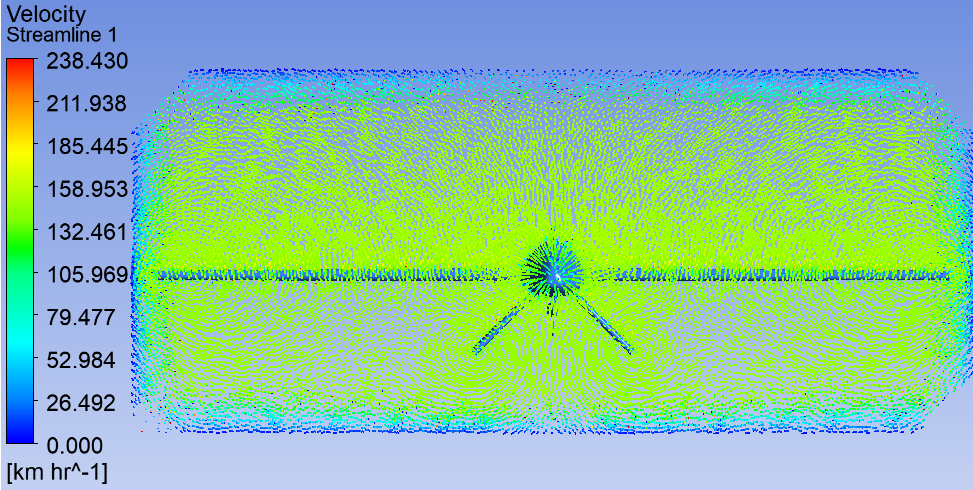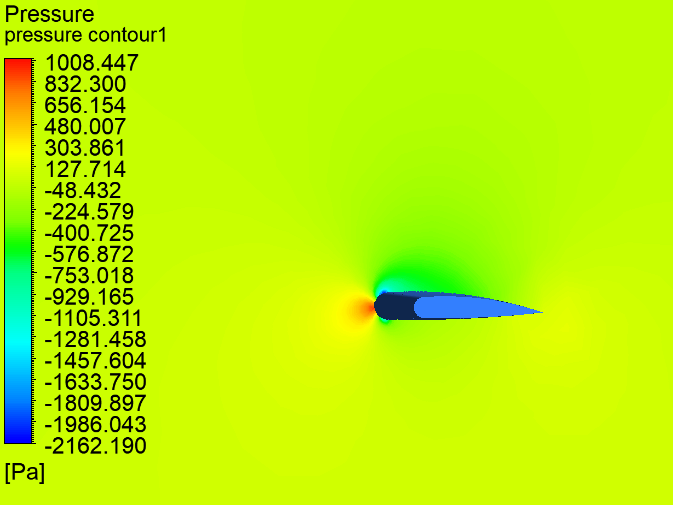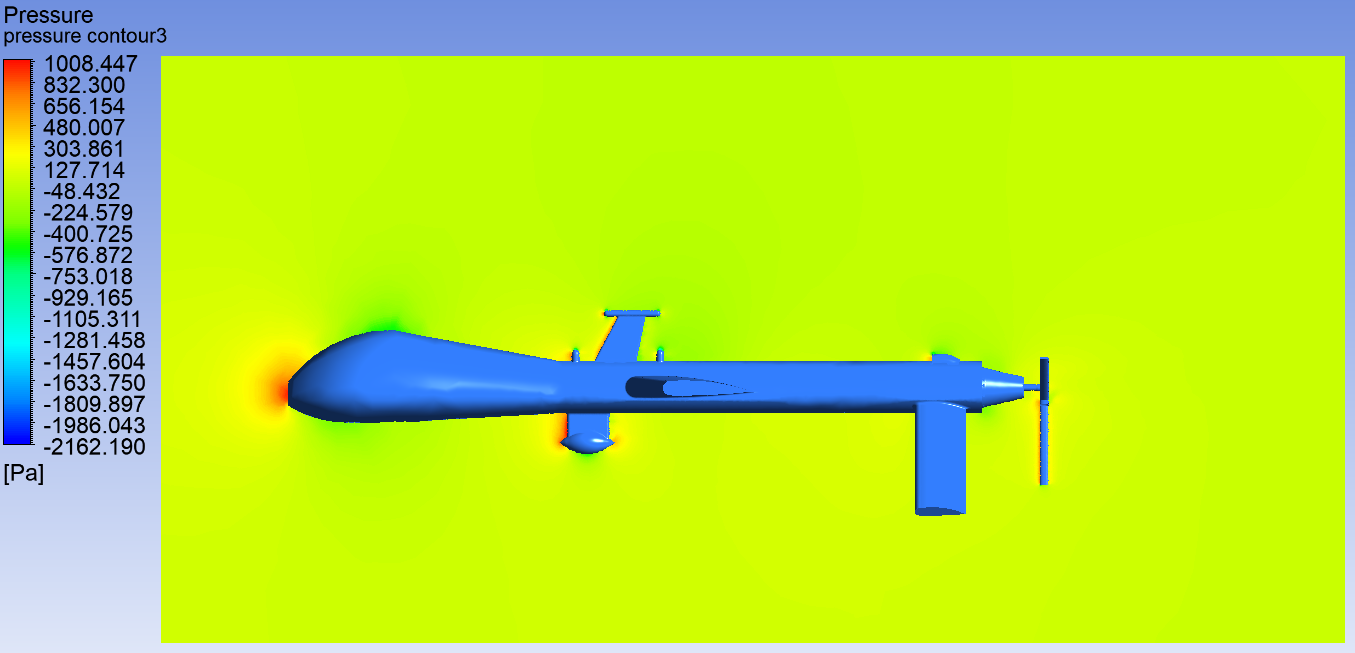Project Description: Aerodynamic analysis of a surveillance UAV
Geometry Development and Meshing Strategy
The project titled "Aerodynamic Analysis of a Surveillance UAV" entailed a comprehensive investigation into the aerodynamic characteristics of a fixed-wing unmanned aerial vehicle (UAV) designed for surveillance operations. The study began with the development of a detailed 3D geometry of the UAV using Ansys SpaceClaim, where emphasis was placed on modeling critical aerodynamic surfaces including the fuselage, wings, tail assembly, and control surfaces with accuracy and clean surface topology to ensure high-quality mesh generation. Following the CAD phase, the model was imported into Ansys Fluent Meshing, where a structured and refined mesh was created, particularly around regions of expected flow separation such as the leading edges, wing-fuselage junctions, and control surface hinges. A mesh independence study was conducted to ensure numerical accuracy without excessive computational cost.
Simulation Setup, Results, and Design Insights
Boundary conditions were defined to simulate realistic flight conditions, including varying angles of attack, flow velocities corresponding to cruise and loitering phases, and atmospheric pressure at operating altitudes. Turbulence was modeled using the k-ω SST model due to its robustness in predicting both near-wall flows and wake regions. The CFD simulations were carried out in Ansys Fluent, where results such as pressure contours, velocity vectors, lift and drag coefficients, and flow separation zones were analyzed. This provided insight into aerodynamic performance, stability margins, and areas for design improvement. Post-processing revealed how small geometric changes influenced overall aerodynamic efficiency, leading to design recommendations such as slight winglet adjustments and streamlined fairings to reduce drag.
Project Takeaways
Key takeaways from the project included the importance of clean CAD modeling for mesh quality, the need for iterative simulation to validate results, and the utility of CFD in pre-prototyping performance prediction. The project not only enhanced understanding of UAV aerodynamics but also demonstrated the critical role of simulation tools in modern aerospace design. Due to proprietary confidentiality rules, only selected parts of the field plots and data were retained for presentation.


